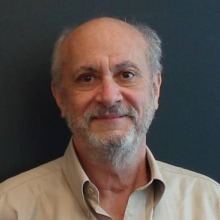Name Donald Rubin | Known for Rubin Causal Model | |
 | ||
Born December 22, 1943 (age 81) ( 1943-12-22 ) Institutions Educational Testing ServicePrinceton UniversityUniversity of Wisconsin–MadisonUniversity of ChicagoHarvard University Awards R. A. Fisher Lectureship, Guggenheim Fellowship for Natural Sciences, US & Canada, Wilks Memorial Award Books Statistical Analysis with Missi, Multiple imputation for nonre, Causal Inference for Statisti, Matched Sampling for Causa, Contrasts and Effect Sizes in B Similar People Andrew Gelman, William Gemmell Cochran, Robert Rosenthal, Ralph L Rosnow | ||
Identification and estimation of causal effects using observation data Professor Donald Rubin,
Donald Bruce Rubin is the John L. Loeb Professor of Statistics at Harvard University. He was hired by Harvard in 1984, and served as chair of the department from 1985-1994.
Contents
- Identification and estimation of causal effects using observation data Professor Donald Rubin
- 1955 IDSS Distinguished Seminar Series Fall 17 Donald Rubin
- Chronology
- Rubin causal model
- References
He is most well known for the Rubin Causal Model, a set of methods designed for causal inference with observational data, and for his methods for dealing with missing data.
1955 IDSS Distinguished Seminar Series Fall 17 Donald Rubin
Chronology
As an undergraduate Rubin attended the accelerated Princeton University PhD program where he was one of a cohort of 20 students mentored by the physicist John Wheeler (the intention of the program was to confirm degrees within 5 years of freshman matriculation). He switched to psychology and graduated in 1965. He began graduate school in psychology at Harvard with a National Science Foundation fellowship, but because his statistics background was considered insufficient, he was asked to take introductory statistics courses. Rubin felt insulted by this given his background in physics, so he decided to transfer to applied math, as he says in the introduction to Matched Sampling for Causal Effects.
He received his M.A. in applied math in 1966, and spent the summer consulting for Princeton sociologist Robert Althauser on comparing the achievement of white and black students, where he first used a matching method.
Rubin became a PhD student again, this time in Statistics under William Cochran at the Harvard Statistics Department. After graduating from Harvard in 1970, he began working at the Educational Testing Service in 1971, and served as a visiting faculty member at Princeton's new statistics department. He published his major papers on the Rubin causal model in 1974–1980, and a textbook on the subject with econometrician Guido Imbens to be published in May, 2015.
Rubin later moved to the University of Wisconsin–Madison, the University of Chicago, and Harvard.
Rubin causal model
The Rubin causal model is based on the idea of potential outcomes and the assignment mechanism: every unit has different potential outcomes depending on their "assignment" to a condition. For instance, someone may have one income at age 40 if they attend a private college and a different income at age 40 if they attend a public college; to measure the causal effect of going to a public versus a private college, the investigator should look at the outcome for the same individual in both alternative futures. It is obviously impossible to see both potential outcomes at once, and one of the potential outcomes is always missing. A randomized experiment works by assigning people randomly to (in this case) public or private college; because the assignment was random, the groups are (on average) equivalent, and the difference in income at age 40 can be attributed to the college assignment since that was the only difference between the groups.
The assignment mechanism is the explanation for why some units received the treatment and others the control. In observational data, there is a non-random assignment mechanism: in the case of college attendance, people may choose to attend a private versus a public college based on their financial situation, parents' education, relative ranks of the schools they were admitted to, etc. If all of these factors can be balanced between the two groups of public and private college students, then in Rubin's model the effect of college attendance can be attributed to the college choice.
